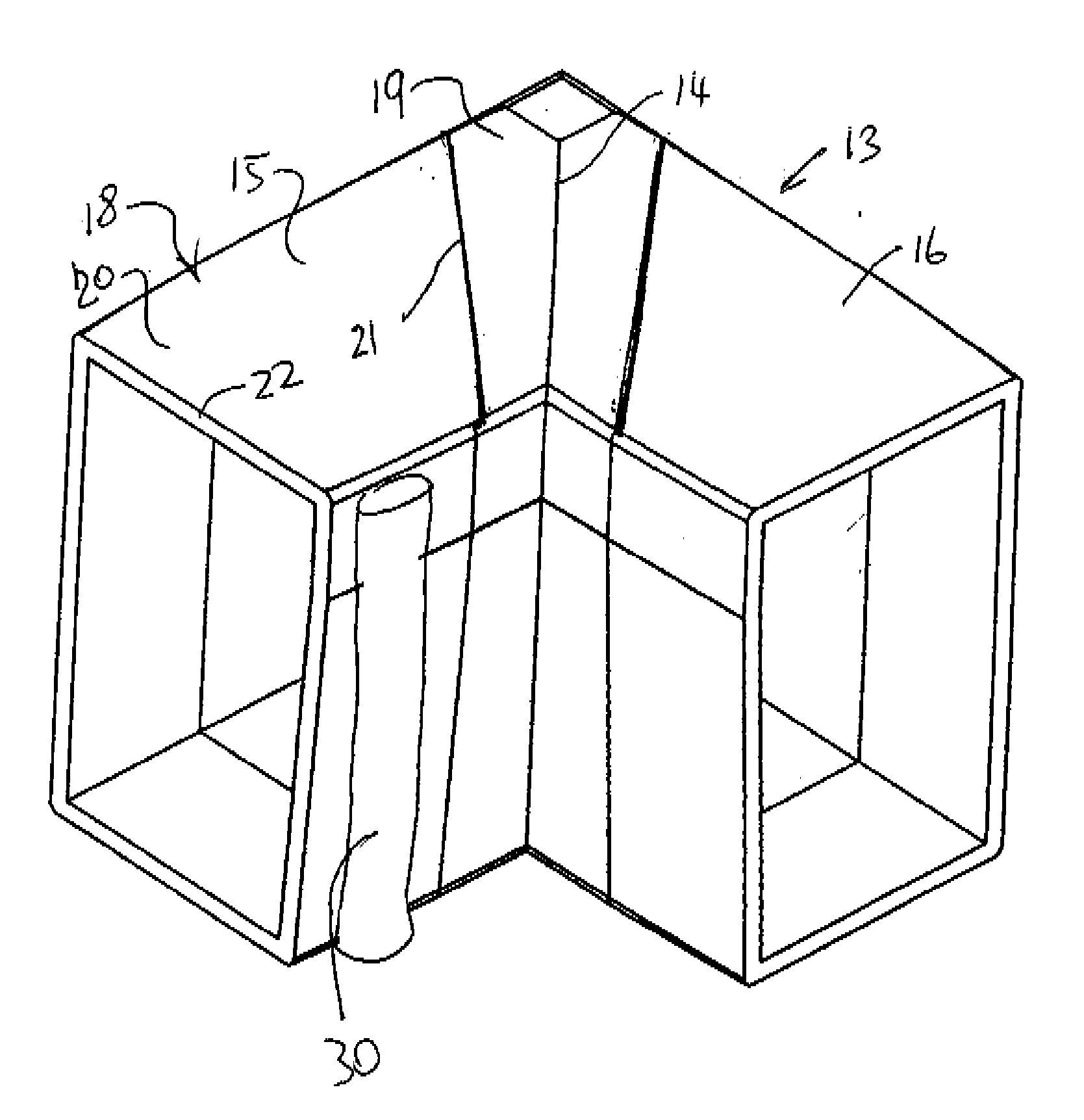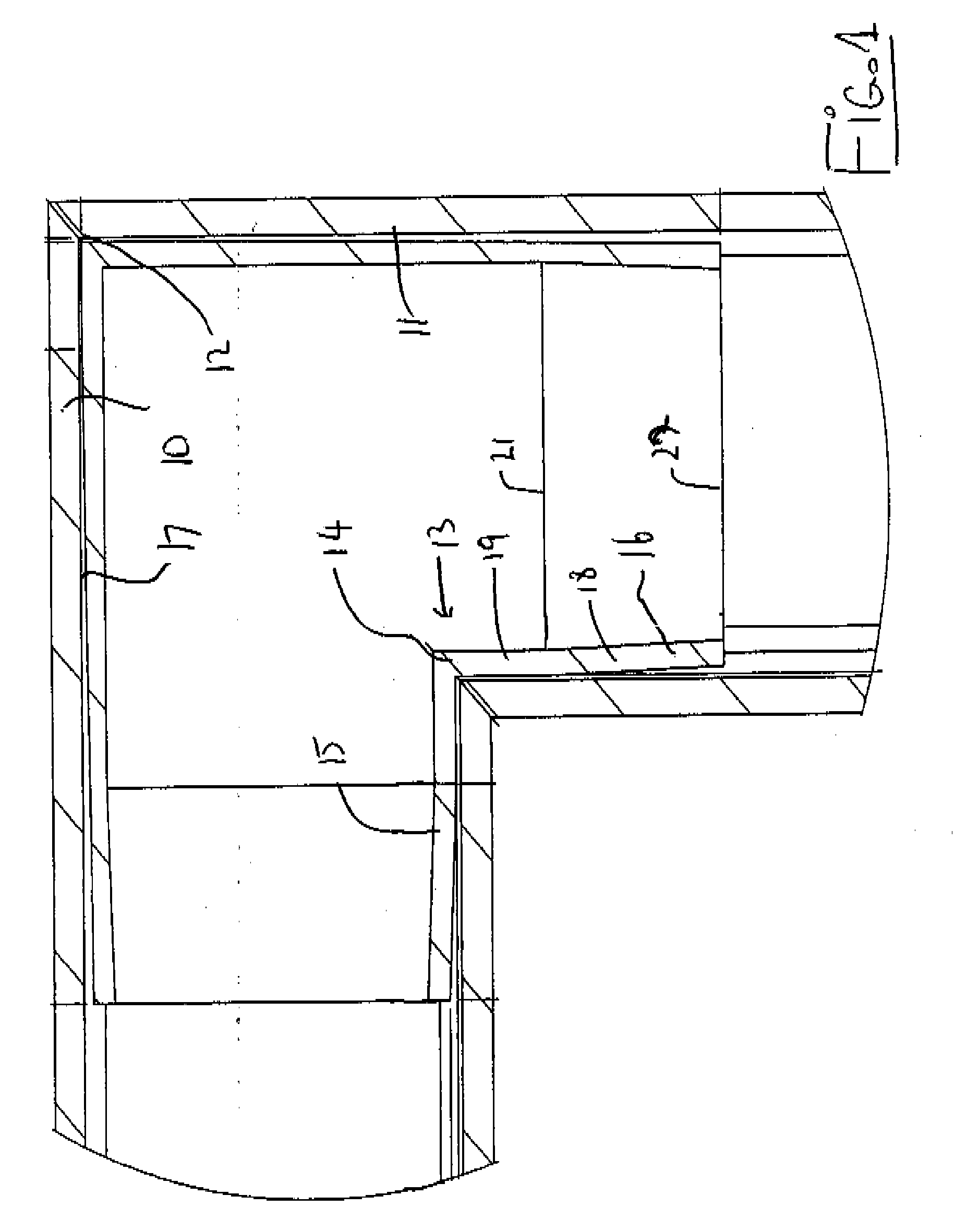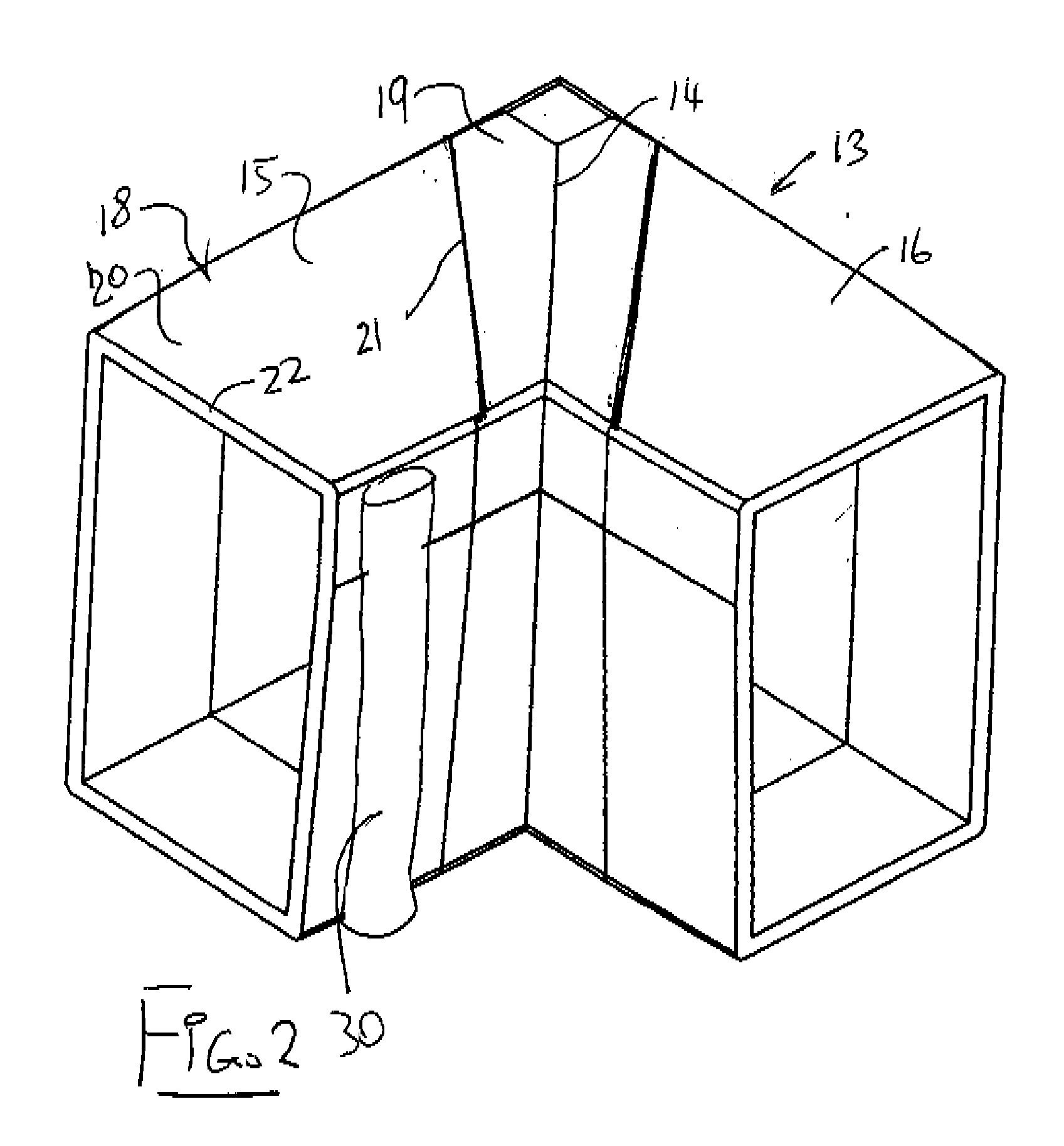Corner joint for pultruded window frame
a window frame and corner joint technology, applied in the direction of dovetail-like connections, rod connections, ropes and cables for vehicles/pulleys, etc., can solve the problems of difficult forming corners which need to be mechanically fastened using corners, relatively slow and more expensive process, and the practice of not being widely adopted, etc., to achieve constant spacing and not constant spacing
- Summary
- Abstract
- Description
- Claims
- Application Information
AI Technical Summary
Benefits of technology
Problems solved by technology
Method used
Image
Examples
Embodiment Construction
[0046]In FIG. 1 is shown a joint at a corner of a frame for a window or similar pultruded frame. The frame includes two frame lineals indicated at 10 and 11 respectively which connect together at a mitre joint 12.
[0047]The frame members 10 and 11 are formed by pultrusion by a fiber reinforced resin material so that they provide a constant cross section along the length of the frame members. The frame members are cut to length from a continuous pultruded lineal and can be connected at the corners by cutting the corners at an angle to provide a mitre joint or by connecting the corners at a butt joint. The corner as shown is at 90° so that the frame member 10 is at 90° to the frame member 11 but it is not essential that the corners be at right angles.
[0048]The corner connection is formed by providing a corner insert member generally indicated at 13. This corner insert member is formed as an injected moulded plastics part which defines an integral member defining a coupling portion 14 a...
PUM
 Login to View More
Login to View More Abstract
Description
Claims
Application Information
 Login to View More
Login to View More - R&D
- Intellectual Property
- Life Sciences
- Materials
- Tech Scout
- Unparalleled Data Quality
- Higher Quality Content
- 60% Fewer Hallucinations
Browse by: Latest US Patents, China's latest patents, Technical Efficacy Thesaurus, Application Domain, Technology Topic, Popular Technical Reports.
© 2025 PatSnap. All rights reserved.Legal|Privacy policy|Modern Slavery Act Transparency Statement|Sitemap|About US| Contact US: help@patsnap.com



